Teaching
3D and 2D Animation

Karen has taught animation for six years at universities in Australia and Hong Kong. She has given talks in Japan and Thailand; attended conferences, festivals and seminars on international animation; and helped her students win international attention and awards with their work.
Her classes on developing short animations from script to screen lead in 2006 to PreAnimate!, covering everything from what works best in animation to the nitty-gritty of file organisation.
Karen has taught numerous aspects of animation including:
-
3D animation
-
2D animation
-
Storyboarding
-
Narrative for animation
-
Alternative animation techniques
-
Drawing for animation
-
Visual effects
-
Procedural animation
She has extensive knowledge of Maya, Houdini and 3D Studio Max as well as using Flash and After Effects for 2D animation and is generally comfortable with technology even down to resistor level.
Most of her students have known English only as a second language but
this
has not been a barrier for such a visual subject area.
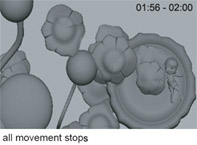
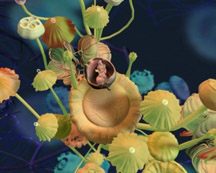
© Winnie Chung, 2005.
Karen encourages her students to use animatics throughout the animation process to aid feedback and so that a well-timed soundtrack can be produced in tandem with the animation.

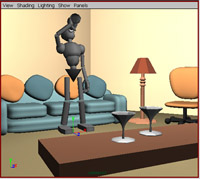
Character animation can create so many technical hurdles for beginning students that developing fascinating characters and stories is often forgotten while students wrestle with the software.
© Nicola Kan, 2005.
 Karen's emphasis is always on bringing a
character to life through
acting skills, logical character motivation and a well thought out
narrative.
Karen's emphasis is always on bringing a
character to life through
acting skills, logical character motivation and a well thought out
narrative.
To encourage her students to concentrate on these aspects she introduces fully-articulated dummy characters they can mold and manipulate as they wish. One of her students, Nicola Kan, animated the dummy character for her graduating animation, and superimposed her original character only in the final stages.

Karen designed a 2D Flash animation class with the intention of focusing on the 'Animation Principles' of timing, squash and stretch, choreography, follow through, etc.
Many students, including Hung Chi Wing were so inspired they preferred to work in 2D for their graduating animations instead of the more popular choice of 3D.
Another course designed especially for curious beginners covered 'alternative' animation techniques, like stop-motion, pixilation, collage animation and combining live action and animation.


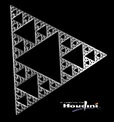
One of Karen's primary interests is in the automatic generation of geometry and animation. The possibilities of procedural animation, especially for particle systems have been exploited extensively in visual effects. Her classes on this subject involve a little programming which is often relished by the more advanced students.
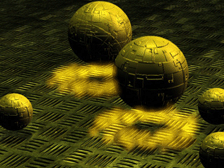
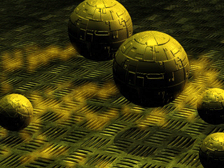
Academic
Paper:
"Programming Literacy for Artists", ISEA (Inter-Society for Electronic Arts) 2002 "Ourai" Nagoya, Japan, October 2002

Reseach:
"Flocking Robots" - a 2002 project investigating small scale co-operative robots. The robots were locomotive spheres which had a degree of autonomy and organisation.
Student's work
To see some of Karen's student's work click here.
Contact details
- Email: karenmccann@hotmail.com